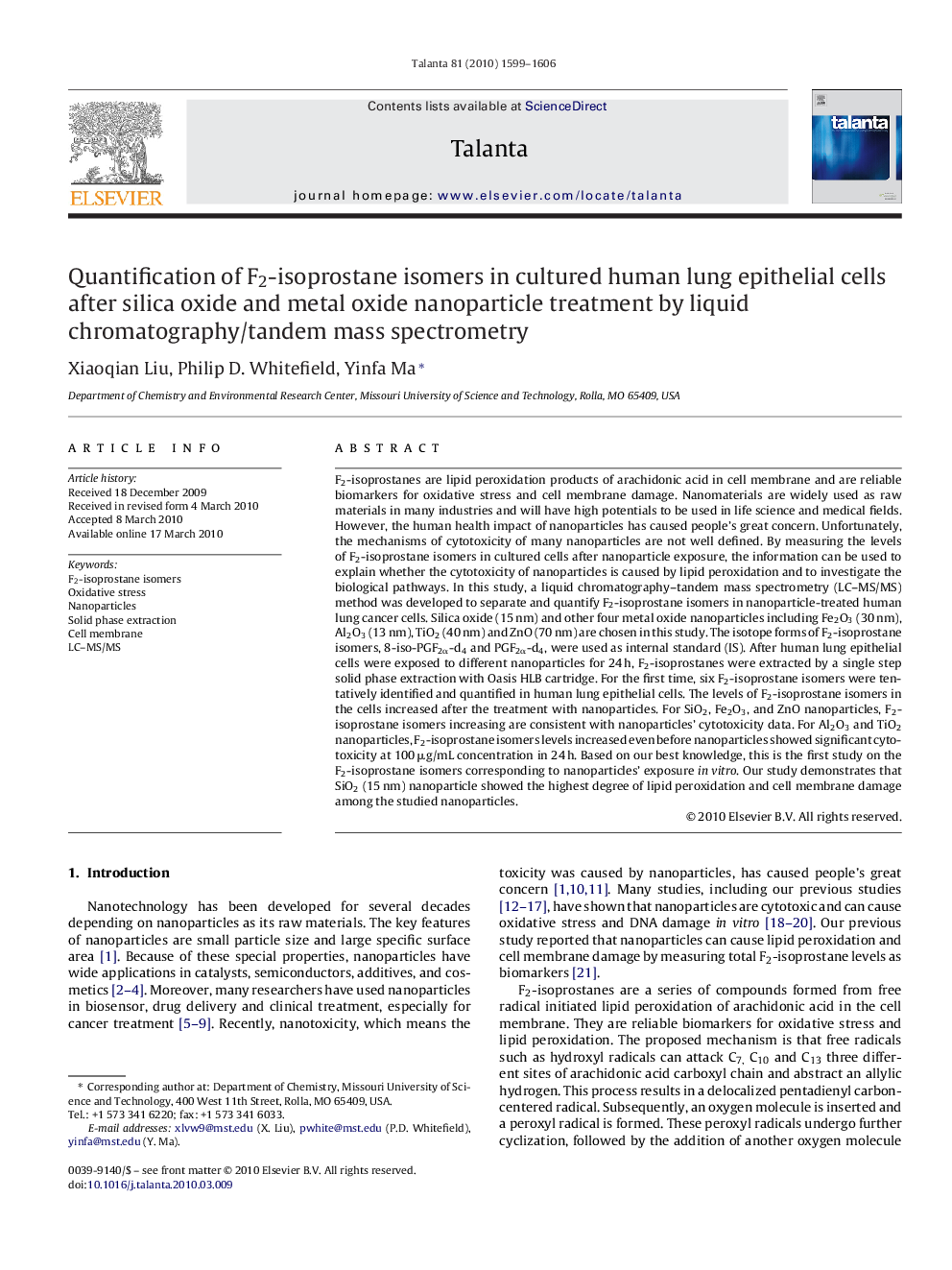| Article ID | Journal | Published Year | Pages | File Type |
|---|---|---|---|---|
| 1242676 | Talanta | 2010 | 8 Pages |
F2-isoprostanes are lipid peroxidation products of arachidonic acid in cell membrane and are reliable biomarkers for oxidative stress and cell membrane damage. Nanomaterials are widely used as raw materials in many industries and will have high potentials to be used in life science and medical fields. However, the human health impact of nanoparticles has caused people's great concern. Unfortunately, the mechanisms of cytotoxicity of many nanoparticles are not well defined. By measuring the levels of F2-isoprostane isomers in cultured cells after nanoparticle exposure, the information can be used to explain whether the cytotoxicity of nanoparticles is caused by lipid peroxidation and to investigate the biological pathways. In this study, a liquid chromatography–tandem mass spectrometry (LC–MS/MS) method was developed to separate and quantify F2-isoprostane isomers in nanoparticle-treated human lung cancer cells. Silica oxide (15 nm) and other four metal oxide nanoparticles including Fe2O3 (30 nm), Al2O3 (13 nm), TiO2 (40 nm) and ZnO (70 nm) are chosen in this study. The isotope forms of F2-isoprostane isomers, 8-iso-PGF2α-d4 and PGF2α-d4, were used as internal standard (IS). After human lung epithelial cells were exposed to different nanoparticles for 24 h, F2-isoprostanes were extracted by a single step solid phase extraction with Oasis HLB cartridge. For the first time, six F2-isoprostane isomers were tentatively identified and quantified in human lung epithelial cells. The levels of F2-isoprostane isomers in the cells increased after the treatment with nanoparticles. For SiO2, Fe2O3, and ZnO nanoparticles, F2-isoprostane isomers increasing are consistent with nanoparticles’ cytotoxicity data. For Al2O3 and TiO2 nanoparticles, F2-isoprostane isomers levels increased even before nanoparticles showed significant cytotoxicity at 100 μg/mL concentration in 24 h. Based on our best knowledge, this is the first study on the F2-isoprostane isomers corresponding to nanoparticles’ exposure in vitro. Our study demonstrates that SiO2 (15 nm) nanoparticle showed the highest degree of lipid peroxidation and cell membrane damage among the studied nanoparticles.
